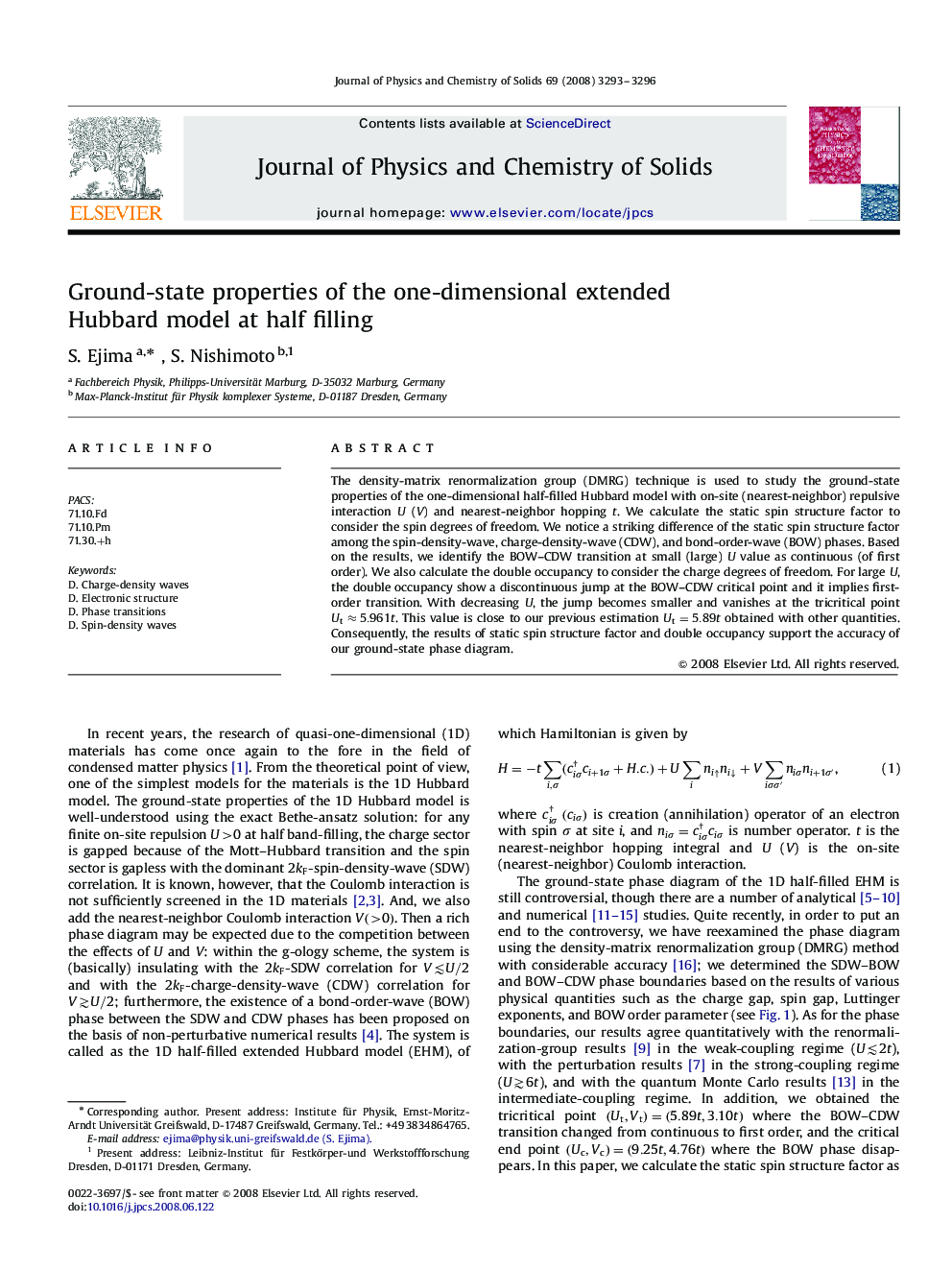| Article ID | Journal | Published Year | Pages | File Type |
|---|---|---|---|---|
| 1518205 | Journal of Physics and Chemistry of Solids | 2008 | 4 Pages |
The density-matrix renormalization group (DMRG) technique is used to study the ground-state properties of the one-dimensional half-filled Hubbard model with on-site (nearest-neighbor) repulsive interaction U (V) and nearest-neighbor hopping t. We calculate the static spin structure factor to consider the spin degrees of freedom. We notice a striking difference of the static spin structure factor among the spin-density-wave, charge-density-wave (CDW), and bond-order-wave (BOW) phases. Based on the results, we identify the BOW–CDW transition at small (large) U value as continuous (of first order). We also calculate the double occupancy to consider the charge degrees of freedom. For large U, the double occupancy show a discontinuous jump at the BOW–CDW critical point and it implies first-order transition. With decreasing U , the jump becomes smaller and vanishes at the tricritical point Ut≈5.961tUt≈5.961t. This value is close to our previous estimation Ut=5.89tUt=5.89t obtained with other quantities. Consequently, the results of static spin structure factor and double occupancy support the accuracy of our ground-state phase diagram.
